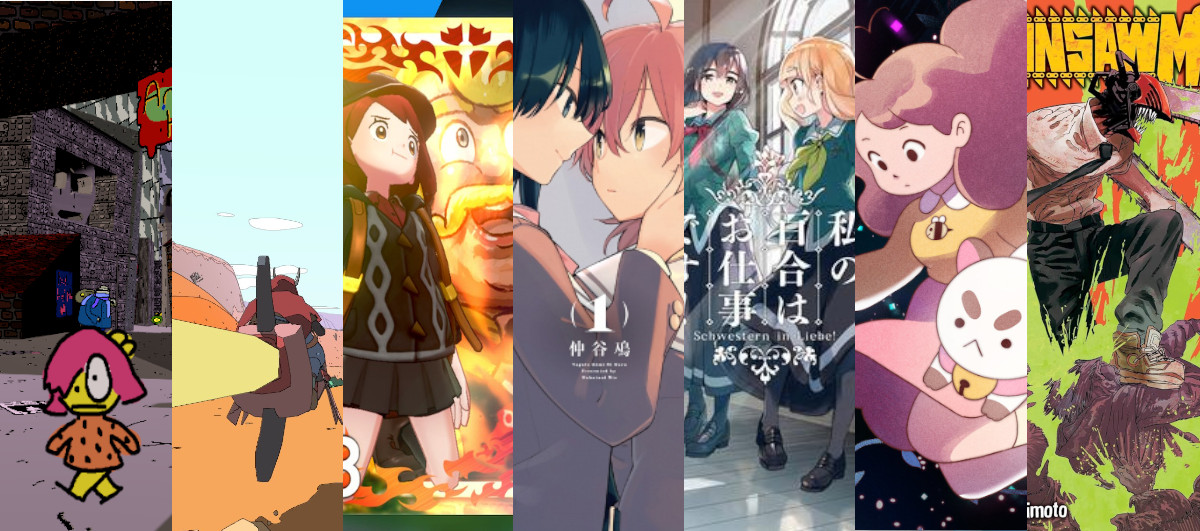
When I decided to review media for my blog, I was in the middle of what would turn out to be the final year of my graduate school career. I was struggling to write a dissertation prospectus that I never really wanted to write, so I found myself escaping or procrastinating into other hobbies and interests - moreso than usual. I was also on fellowship that year, meaning I had no formal work responsibilities and a lot of free time. It was as at least as much of a curse as it was a blessing – I was as depressed as I’d ever been, and I wasted a lot of time staring at my incomplete prospectus on my computer screen. In hindsight, I wish I had taken advantage of that time to have spent more time on creative projects and less time beating myself up over my crumbling dissertation, but I did have a lot of free time on my hands, even if it was a monkey paw sort of situation.
What I’m trying to say is: the “Stuff I Liked” series of posts made a lot more sense at a time of my life when I had a lot more free time and needed to find ways to cope with, recover from, and escape grad school. Stories and games helped me survive during that time, and creative endeavors – game development, playing music, and writing the blog – were what helped me rediscover my self-worth and get back in touch with what actually makes me tick. I left my program over the summer, found a full-time job, and life became good again. However, the rigidity of the Monday-thru-Friday grind has slowed my media consumption and productivity down to normal adult human levels. For better and for worse, I find myself now both having less media to write about and less time with which to write about it. And so, I think it is time to bring this series of blog posts – at least, as a regular long-form project - to a close (as it stands, this post is already a couple months behind schedule!). Maybe I’ll return to blogging as a deliberate project once Jailbird Nocturne is done, but in the meanwhile, my ridiculous full-length RPG is demanding all of the attention on the weekends that I can give it.
But! I still have a backlog of media recommendations from the past year that I would never forgive myself for if I didn’t write about them! So I chose the most impactful of the unreviewed items and will cover each of them in 400 words or less (any more than that and I will never shut up about them). This month, I present to you a fine offering of video game, cartoon, anime, and manga recommendations (could someone please, for the love of god recommend a good book to me to diversify my media diet?). As always, thank you for reading!
Anthology of the Killer (thecatamites 2020?-present)
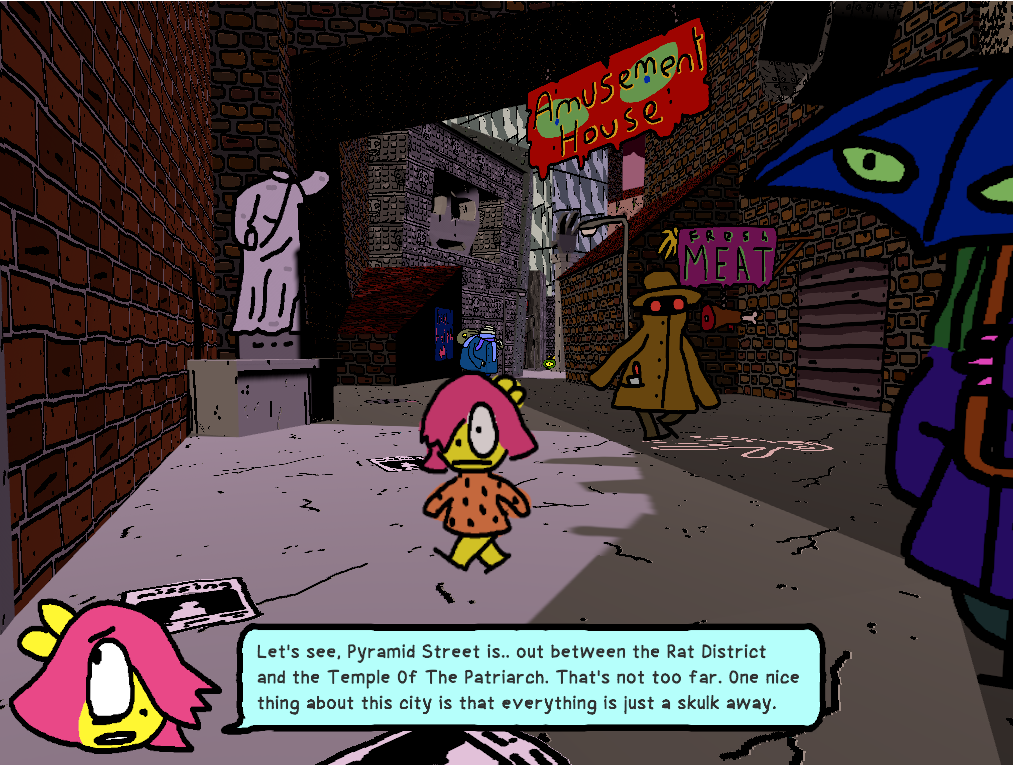
From Ears of the Killer.
A collection of 8 short free games (and counting) by thecatamites, the legendary creator of Space Funeral. Self-described as a series of “funny cartoon horror games,” each episode follows the adventures of zine-maker BB and her encounters with the macabre. There’s a lot of walking, talking, exploring, and being chased. The writing is smart and the atmosphere is thick. Phenomenal series where each subsequent entry somehow manages to be even stronger than the last. I can’t wait for the final installment.
Get 'em here!
Sable (Shedworks 2021)
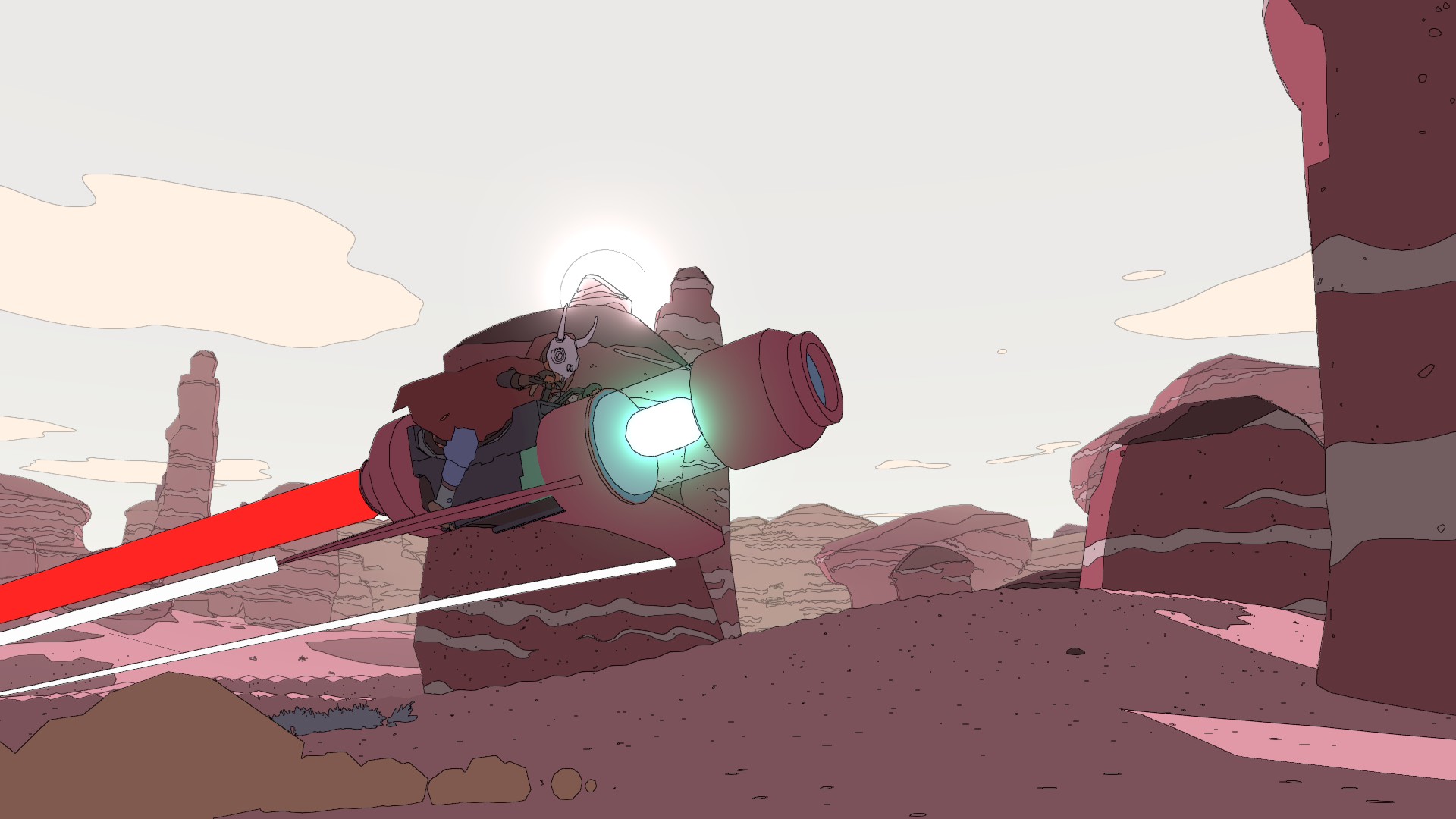
All of these screenshots are from my own playthrough of Sable! It's such a pretty game I couldn't help but document it.
As a now ubiquitous genre, open world games often feel like their potential is underrealized. Most open worlds are boring to explore and seem less concerned with freedom, choice, and exploration and than they are with simply being containers for side quests and other content. Sable is one of the few games I've played that truly understands the strengths of the genre and leans into them.
Sable is a sci-fi open world game about a young girl undertaking a coming of age pilgrimage on a desert planet with her hoverbike. It's a story about growing up, leaving home, and being anxious about your future. You explore the planet, helping its inhabitants with various tasks in order to earn the right to pursue a given profession. Unlike nearly anything else in the genre, Sable is entirely nonviolent, providing satisfying exploration, navigation, conversation, puzzle-solving, and rock-climbing without relying on combat.
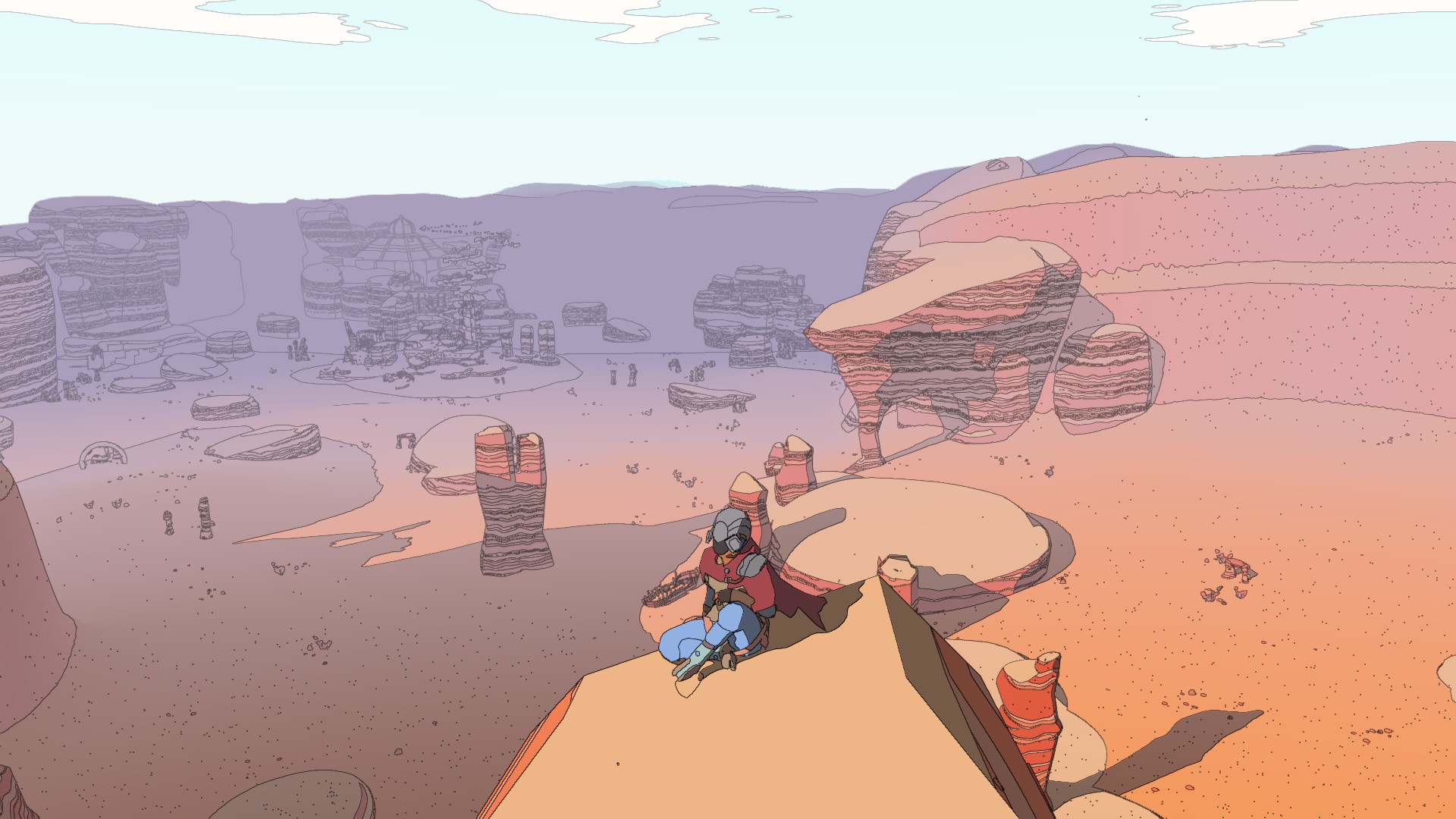
Did I mention there's a dedicated button just for sitting down? Lovely.
What I love most is that the game does away with a lot of the hand-holding that is typical of the genre. For example, while the player can still set waypoints to their destinations on their map, they have to hold down a button to show the compass that displays the waypoints. This encouraged me to spend more time taking the world in and figuring out how to get where I wanted to go myself instead of blindly driving in straight line toward an indicator on the top of my screen. I never once felt like I was checking off a grocery list of menial tasks like I do with most open world games. Instead, my character’s pilgrimage felt like a naturally evolving journey. Geneologically, the game borrows more from Shadow of the Colossus than The Elder Scrolls.
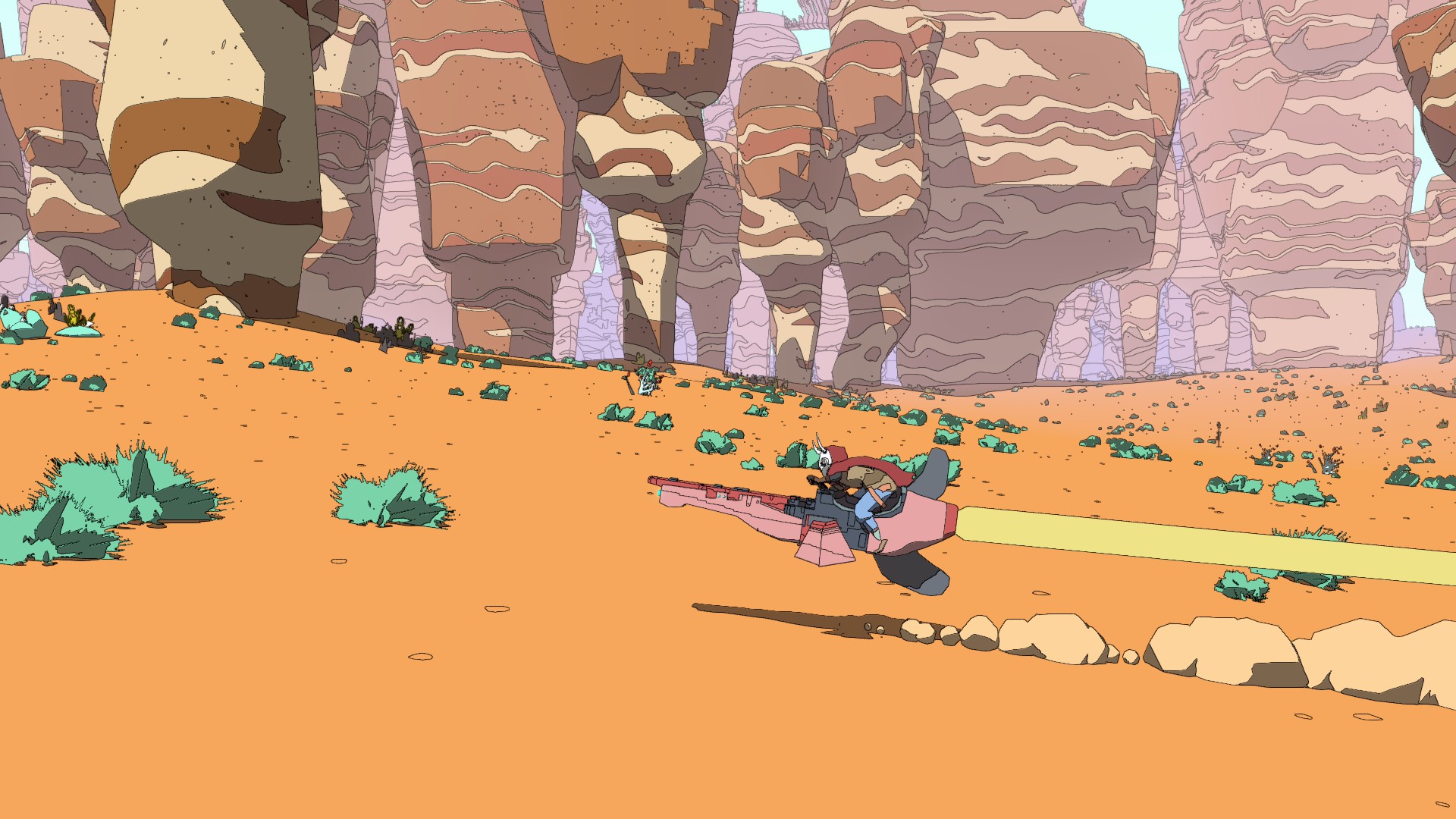
Did I mention that I love games that don't have a UI clogging up the screen by default? This is what playing the game normally looks like! Lovely.
Another plus in my book is that Sable does away with the dichotomy between the “main quest” and “side quests” that exist in most open world games. The invididual tasks you encounter during your pilgrimage are the entire point of the game, making everything you do feel meaningful. I’m still puzzled that this isn’t the default in a genre that often claims to place exploration and freedom at its forefront.
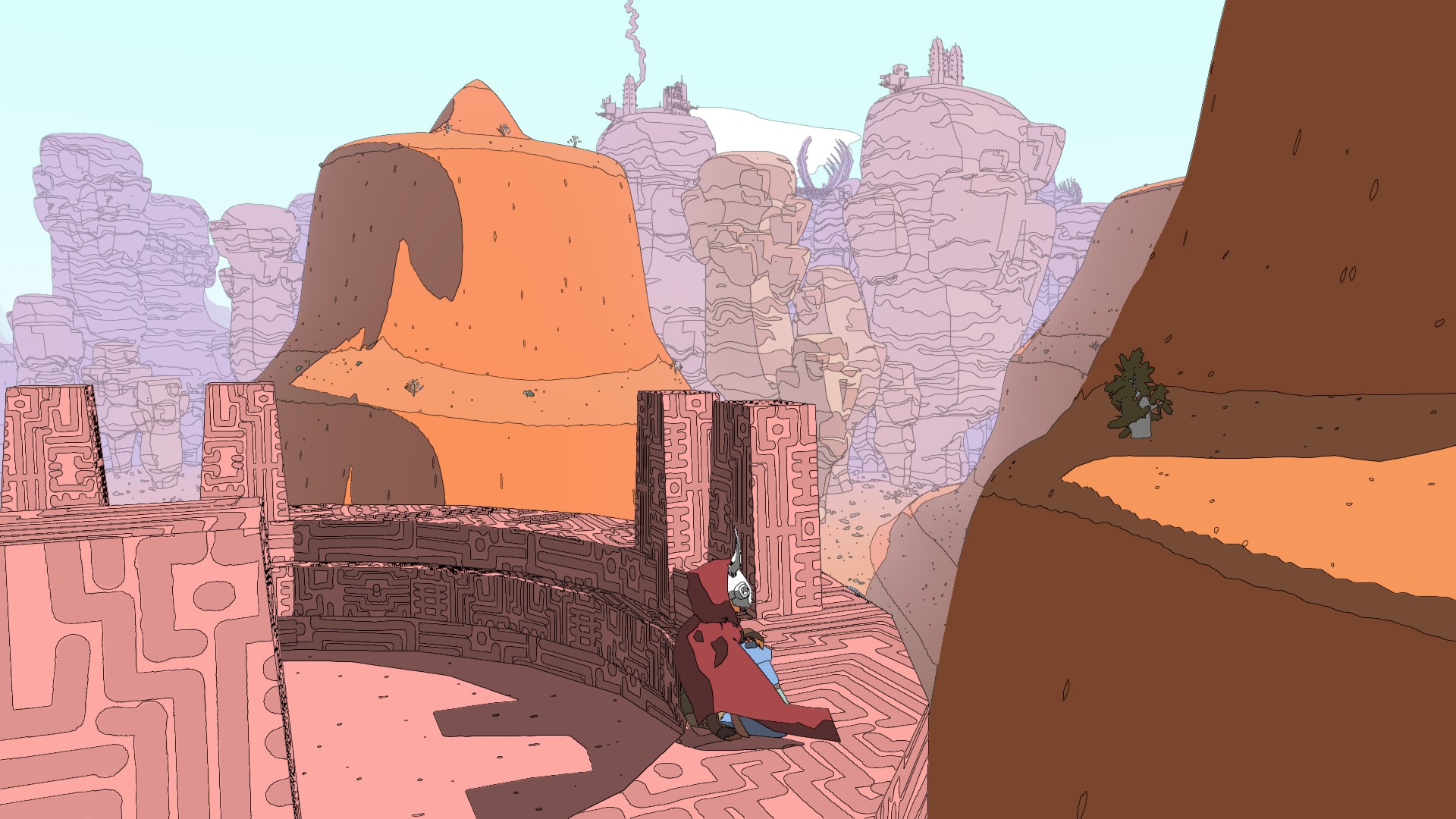
Exploring the planet mostly consists of traveling on your hoverbike, which is straightforward enough, and climbing cliff-faces, natural structures, and wreckage, which is not. Your ability to climb is restricted by your limited stamina, requiring the player to think about the route they take up an obstacle. Getting from A to B is just challenging enough to be interesting without being difficult. This is a nice sweet spot that few games hit, and it suits a relaxed journey like Sable particularly well.
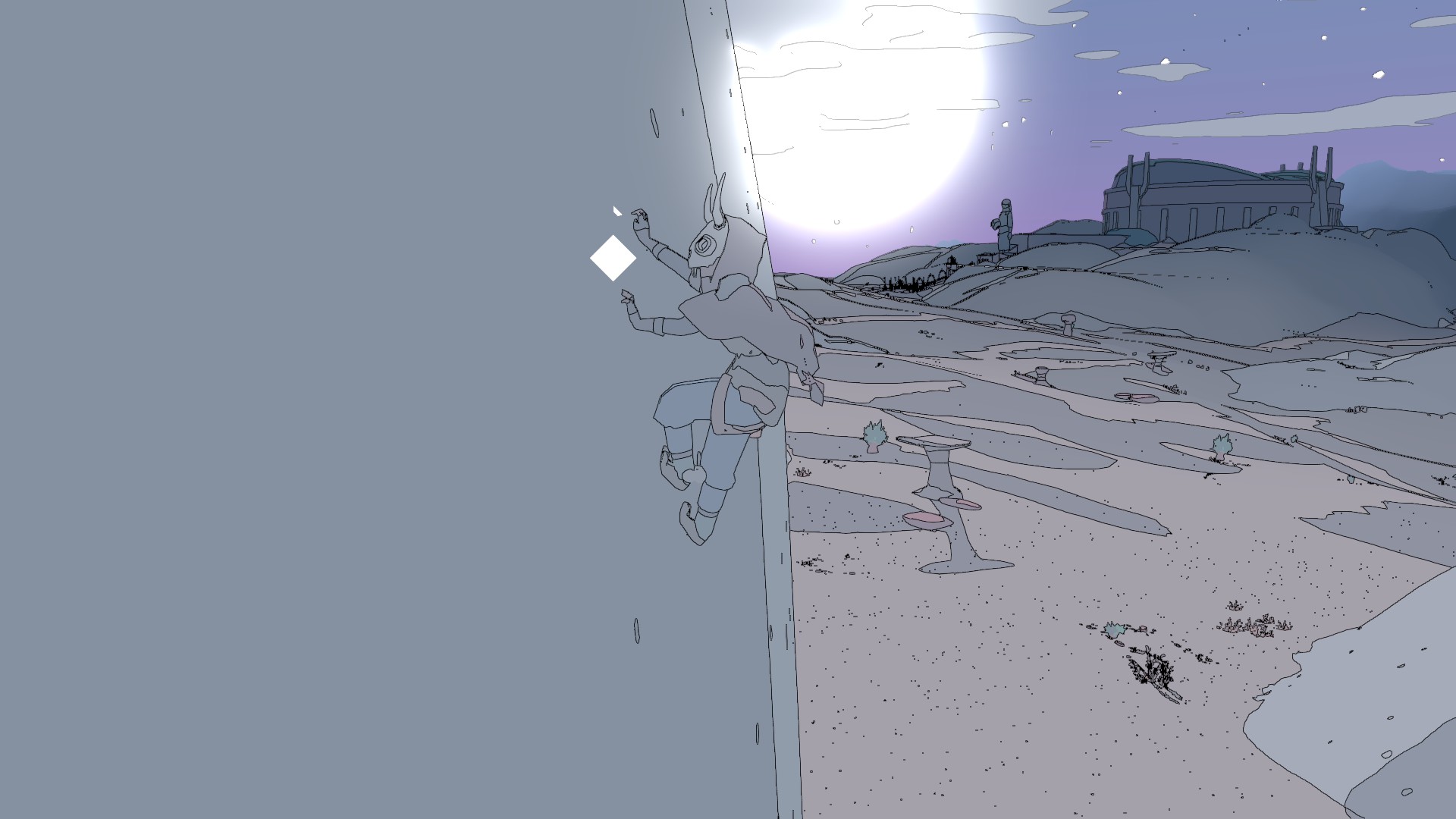
The game doesn’t always run well - expect occasional framerate and lighting issues - but visuals are stylish as hell and smartly circumvent the game’s technical limitations. Entranced by the landscape, I’ve rarely taken so many screenshots of a game as I have with Sable, with my only other exceptions being...
Pokemon Sword and Shield, Legends Arceus, and Scarlet and Violet (Game Freak 2019-2022)
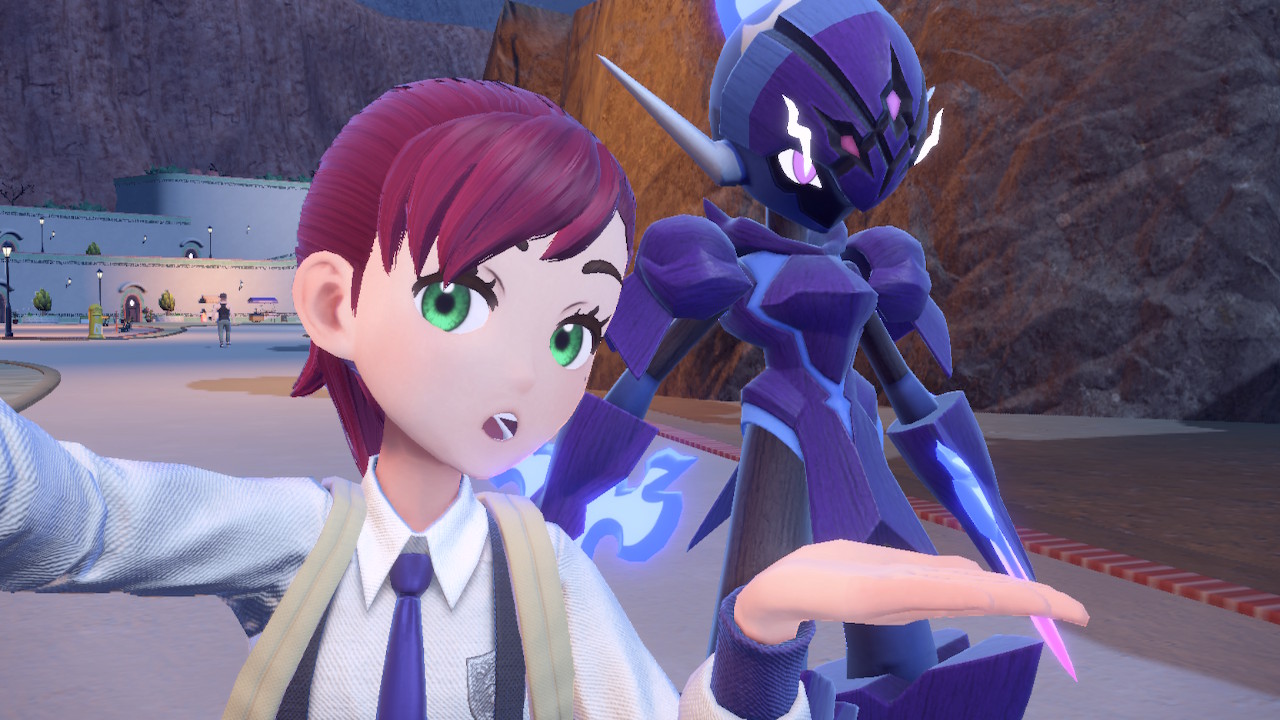
Me and my Ceruledge in Pokemon Violet (Like with Sable, all of these screenshots are from my playthroughs of Pokemon).
The graphical and performance issues of the three most recent Pokemon games for the Nintendo Switch have dominated the discourse around them. Game Freak clearly isn’t used to making 3D games on modern hardware, and the Pokemon Company isn’t giving them enough time to make these games at a comfortable pace. This is a shame, because even though these games don’t run well, I think that their actual content is wonderful. I’ve heard many critics say that Game Freak is able to “get away” with churning out such messy games without asking the interesting question of why they continue to be so popular in spite of their jank.
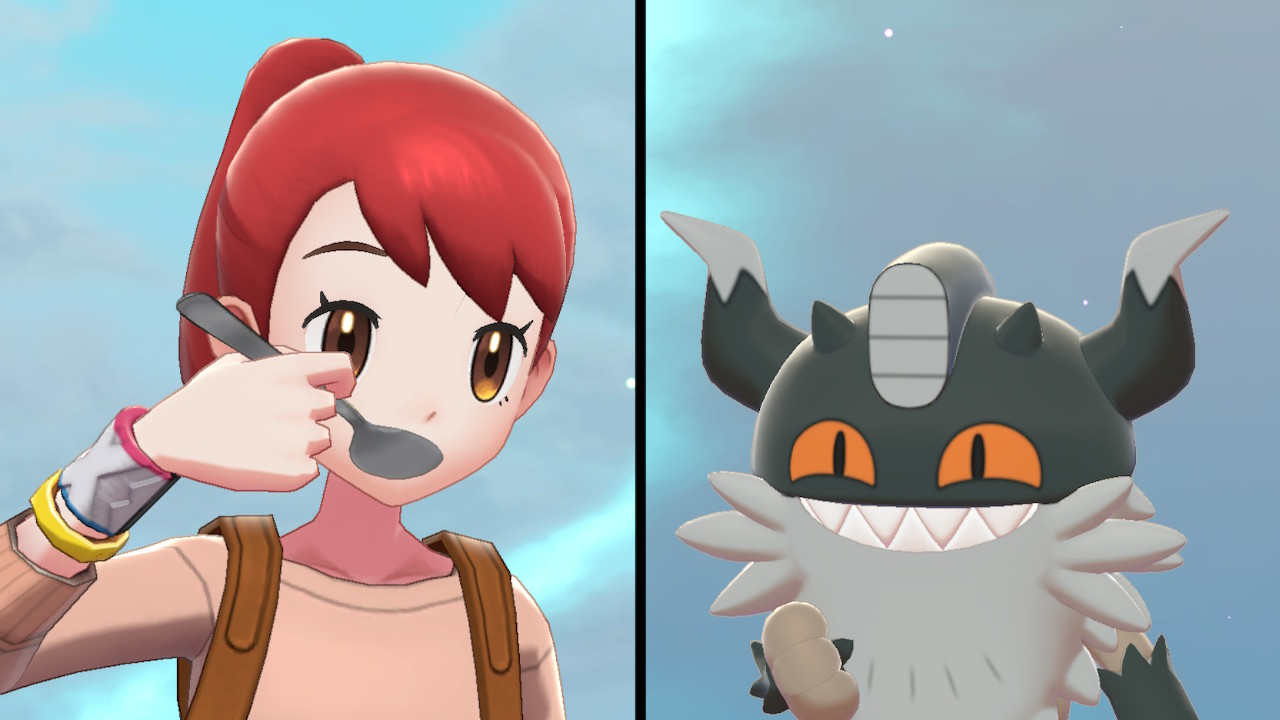
Eating Curry with Perrserker in Pokemon Sword
As a child, I played the first three generations of Pokemon as they came out. Playing Red and Blue on my Game Boy in the late 90’s and early 2000’s was a magical time, and that isn't just nostalgia talking – Red and Blue’s mystique came from a combination of the game's historical context, technical limitations, and design decisions. While I had since caught up on most of the rest of the series as an adult, I had trouble recapturing that magical feeling I experienced as a child with the GBA and DS games.
The eight and ninth generation of Pokemon games, however, have been the most fun I’ve had with the franchise since its second generation. Despite their issues, all three installments understand what Pokemon is about – the unique journey that each player experiences with their particular team of Pokemon and the attachments that they form with them along the way. Conversely, Pokemon’s greatest strengths have rarely been in its graphics, story, or difficulty. Features across the new installments, such as camping, picnics, and in-game photos all reinforce the attachment that the player has with their little team of weirdos, and that’s what I’m here to play Pokemon for. Similarly to Sable, I spent a lot of time in-game taking pictures of my adventure.
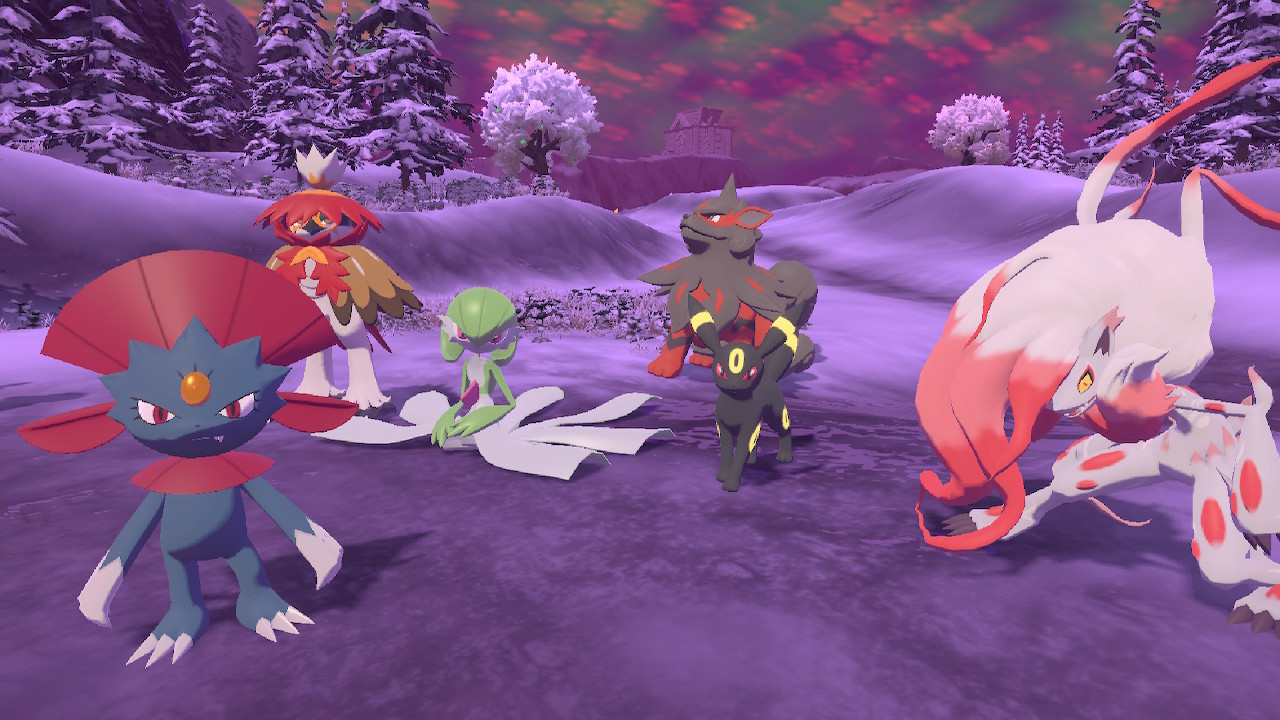
My party in Pokemon Legends Arceus
As for the specific games themselves: despite Sword and Shield’s narrative shortcomings, I had a lot of fun with the over-the-top sports-event-themed gym battles. Legend Arceus’ reimagining of Pokemon’s core formula as a survival action game was a welcome change to the series that I always wanted, and Scarlet and Violet’s open world formula felt less like an innovation in the game’s design and more like a very welcome return-to-form to the openness of the middle section of the original games – the decisions you made in Scarlet/Violet about whether to tackle the next gym, raid the evil team’s base, or pursue the legendary Pokemon storyline feel reminiscent of the types of choices you’d make back in Gen 1. While I wish that the games were harder, the beauty of Pokemon’s design is that you can easily self-impose rules upon yourself to give yourself a challenge, (not that you should have to – c’mon Game Freak, just give us a difficulty slider!)
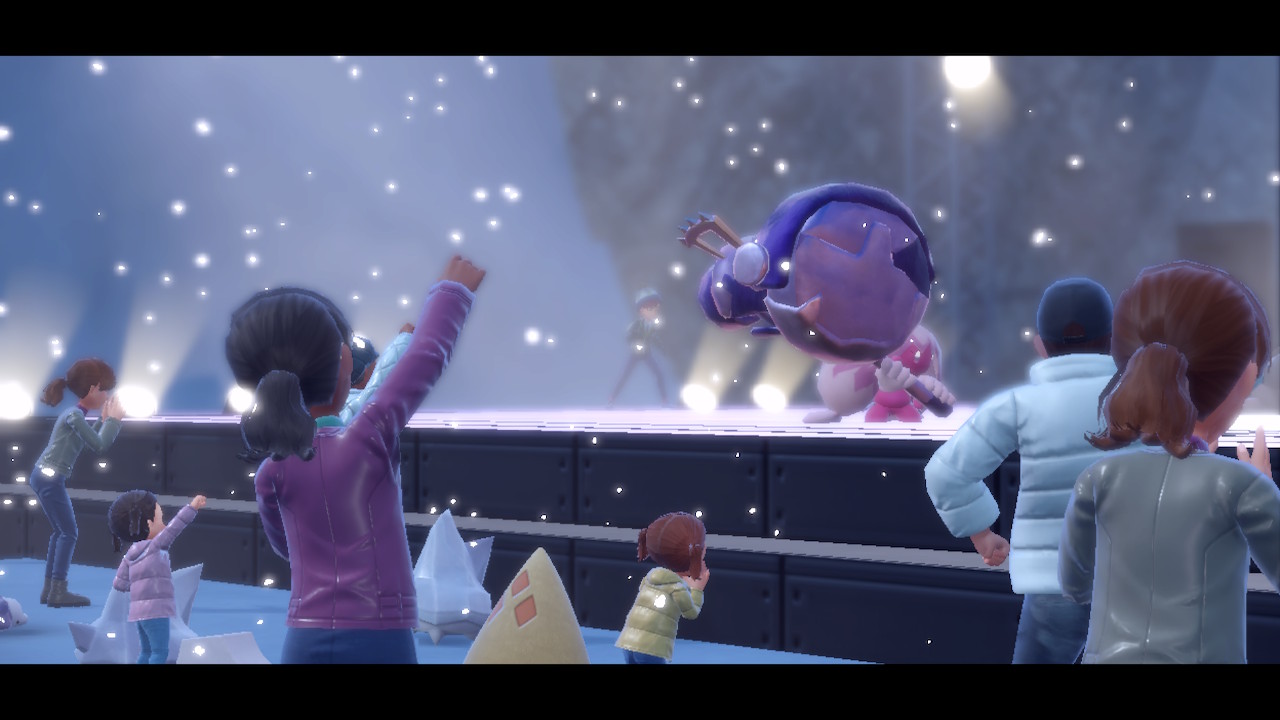
Me and Tinkaton battling a gym leader in Pokemon Violet
It’s a shame that these games, especially Scarlet and Violet, run so poorly, because in spite of it, they are delightful and full of heart. They’re an excellent re-entry point to the series if you haven’t played Pokemon since childhood.
I had a hard time picking which screenshots to include in this blog post, so I decided to upload the rest of them here, if you want to peruse them.
Bloom Into You (Nio Nakatane, 2015-2019) and Yuri is My Job (Miman 2016-present)
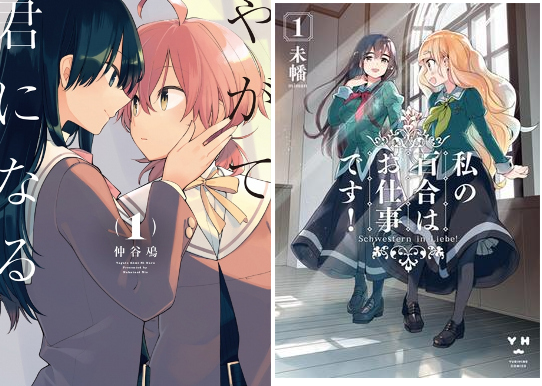
Erica Friedman has said that Yuri, as a genre, can be defined as “lesbian content without lesbian identity.” In other words, while there are plenty of stories about girls romancing girls in anime and manga, very few of these stories contend with the social or political reality of being queer. Homophobia, internalized or otherwise, is nonexistent. Nobody agonizes over coming out. Straight male readers are often the intended audience. As a queer manga reader, I finds this frustrating.
I’m bundling Bloom into You and Yuri is my Job together here because they are both queerer than your typical Yuri. Bloom into You is the story of a one-sided affair between two girls who, until that point, had never experienced romantic attraction for anyone else, featuring multiple characters who struggle to make sense of their sexual orientations over the course of their story. Yuri is my Job is the story of high school girls who work at a cafe where they are required to roleplay as characters from a piece of queerbaity Class S literature. Both contend with the history and tropes of Yuri in different ways, with Yuri is my Job performing a very direct examination of the genre (it’s, uh, it’s in the title).
Neither is perfect, but they’re both really good and refreshingly queer as hell. Bloom’s anime adaption is great but it missing the source material’s ending, so the original manga is a must-read. I was less impressed by the story covered in Yuri is my Job’s anime adaption so far, but the manga goes in some very interesting directions.
Bee and Puppycat: Lazy in Space (2022)
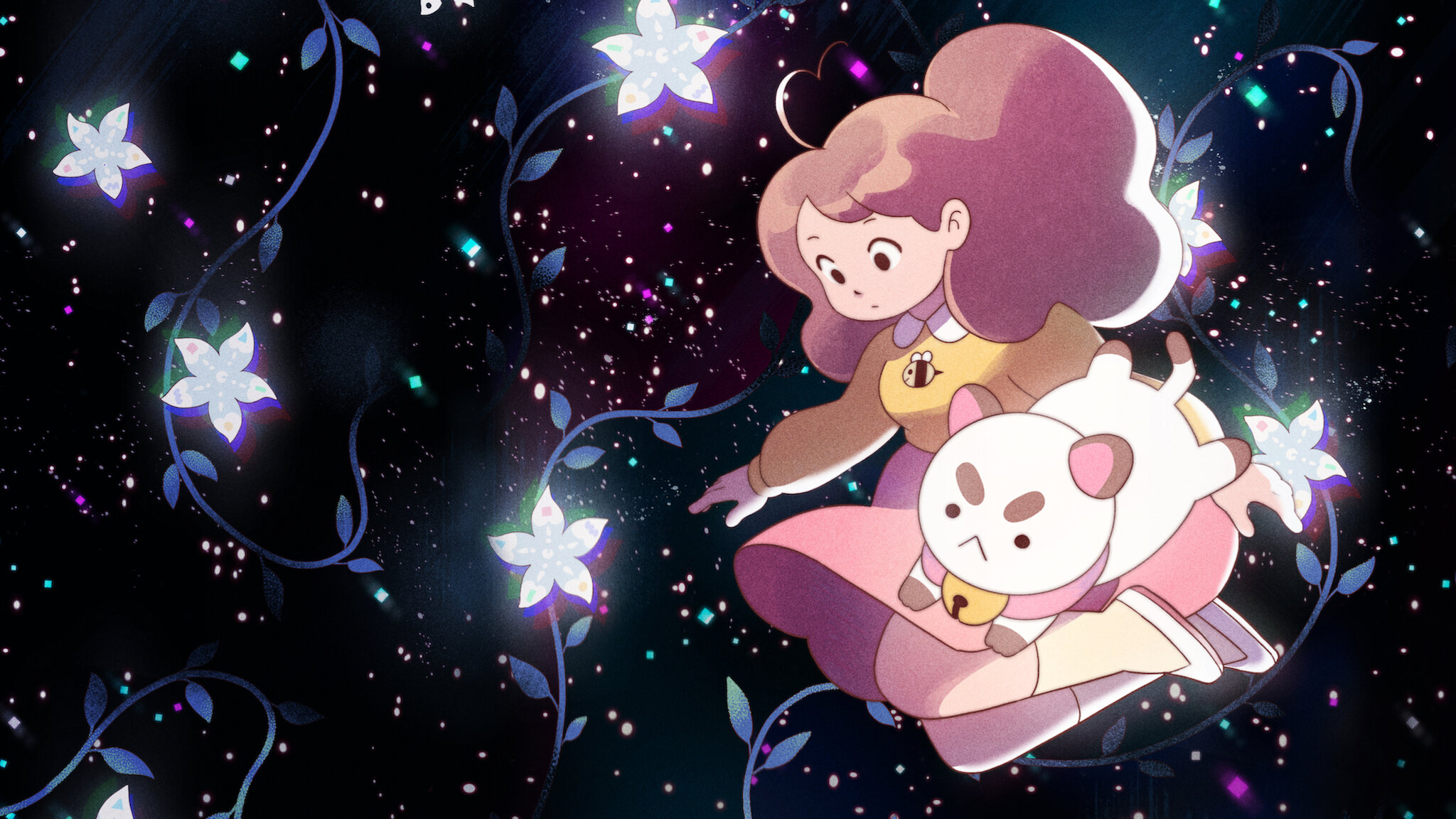
What do ya know, sometimes I watch cartoons that aren’t anime. It’s been a long time since I watched Bee and Puppycat, and I didn’t take notes, so bear with me. I don’t remember the details, but I remember enough about how the show made me feel that I felt it would be a shame if I didn’t at least mention it.
Twenty-something Bee and her pet/roommate/thing Puppycat take odd jobs across space. The world-building is grounded in the present day but feels very loose in a way that is reminiscent of Homestar Runner. Character dialogue is delivered in a sort of frank, awkward, cheeky way that also reminds me a little of Homestar Runner. The show’s cute, and funny, and sometimes crude, and has a lot of heart. Features a good plot twist or two. Bee and Puppycat is a fun and moving representation of being a twenty-something Millennial working shitty jobs and was easily one of the best things I watched last year.
Chainsaw Man (Part 1) (Tatsuki Fujimoto, 2018-2020)
Part 2 is pretty good so far too but is definitely it's own thing.
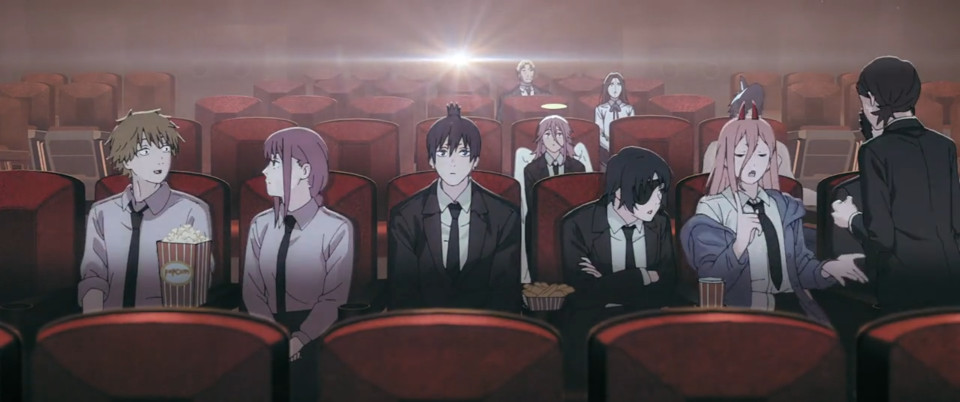
Oh no, Chainsaw Man was actually better than everyone said it was.
I’m by-and-large burnt out on popular shonen anime and manga, but after having it recommended to me a dozen times, I final gave in and read “the shonen manga about the boy who can turn into chainsaws and just wants to touch a boob.” If people pitched it better to me, I would’ve read it sooner, because I think that is a deeply unfair description Chainsaw Man. The plight of the protagonist, Denji, is better described as that of a perpetually exploited person who wishes to live a so-called “normal life” without understanding what that entails (hence his crudely articulated desire for otherwise normal personal intimacy), but yes, he does also turn into chainsaws. It may be an action-adventure shonen manga by definition (teenage boy with supernatural power fights people and saves the world) but it is only by definition. Chainsaw Man is grounded in realism and comments on the adolescent male power fantasy without indulging in it. To lump it into the same genre as My Hero Academia and Dragon Ball Z feels wrong. Because it is wrong. I tried watching Jujutsu Kaisen afterward given how often it is compared to Chainsaw Man and I just couldn't do it. Any similarity between the two is entirely superficial.
Chainsaw Man excels with its character writing. The characters are multi-dimensional, and the main cast has wonderful chemistry. Nobody is a reliable narrator, and while the story is quite dark, few characters are actually as cynical or malevolent as they often perceive themselves out to be. As a recent PhD dropout, I especially appreciated Power’s character – I think her feralness, self-indulgence, and lack of conventional intellect were a form of wish-fulfillment for me as I’ve tried to move away from the "life of the mind." While there is plenty of violence and gore throughout the story, what made me fall in love with Chainsaw Man were the quiet slice-of-life moments and character drama that happen between the action and terror.
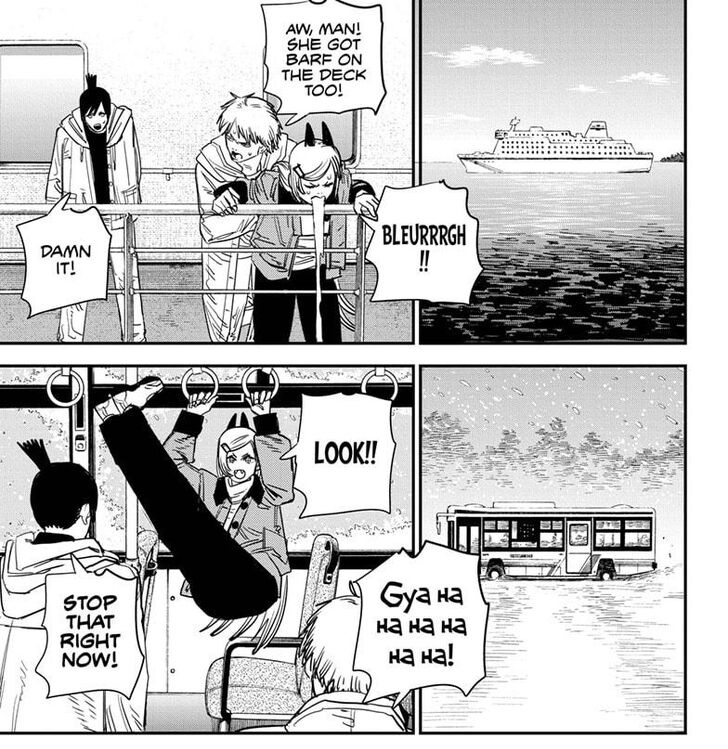
Okay, maybe these weren't the best panels to use to demonstrate my point.
But that isn’t to say that Chainsaw Man rests entirely on its characters and dialogue – the plot is a roller coaster. Fujimoto isn’t afraid to throw the audience a few red herrings and pull the rug out from under their feet on a semi-regular basis. I found the ending a little confusing on an initial read, but I like it more upon revisiting it. The world-building is fun and feels more like something I'd find in a contemporary fantasy novel than in a typical manga or anime. This is also a manga that takes full advantage of the medium – I don’t remember the last time I read a comic or graphic novel where I paid so much attention to the panel layout on each page - and the ongoing anime adaption is just as impressive. Both the manga and anime are worth enjoying, and either makes for a fine starting point to the series.
I simply recommend Chainsaw Man to anyone who likes stories.